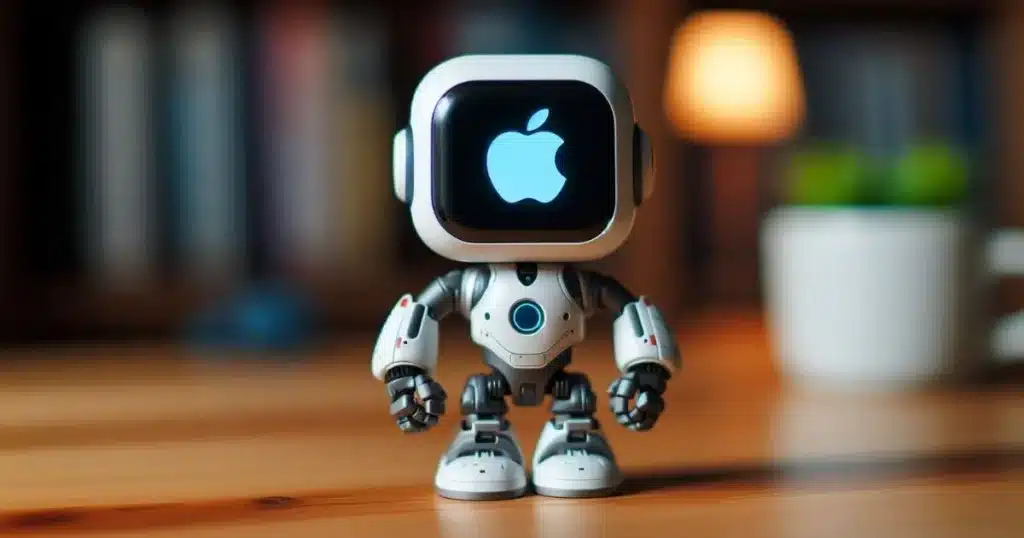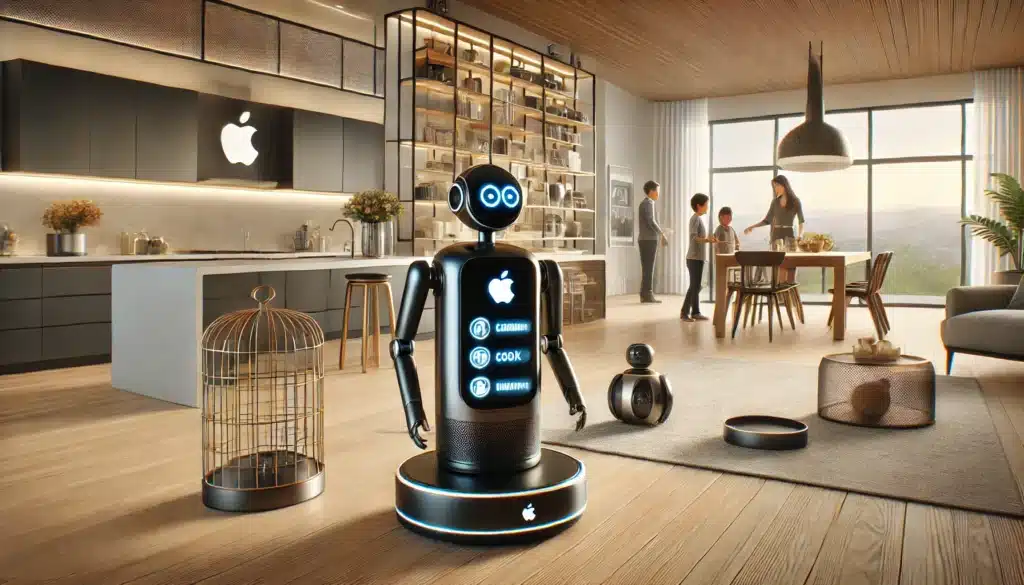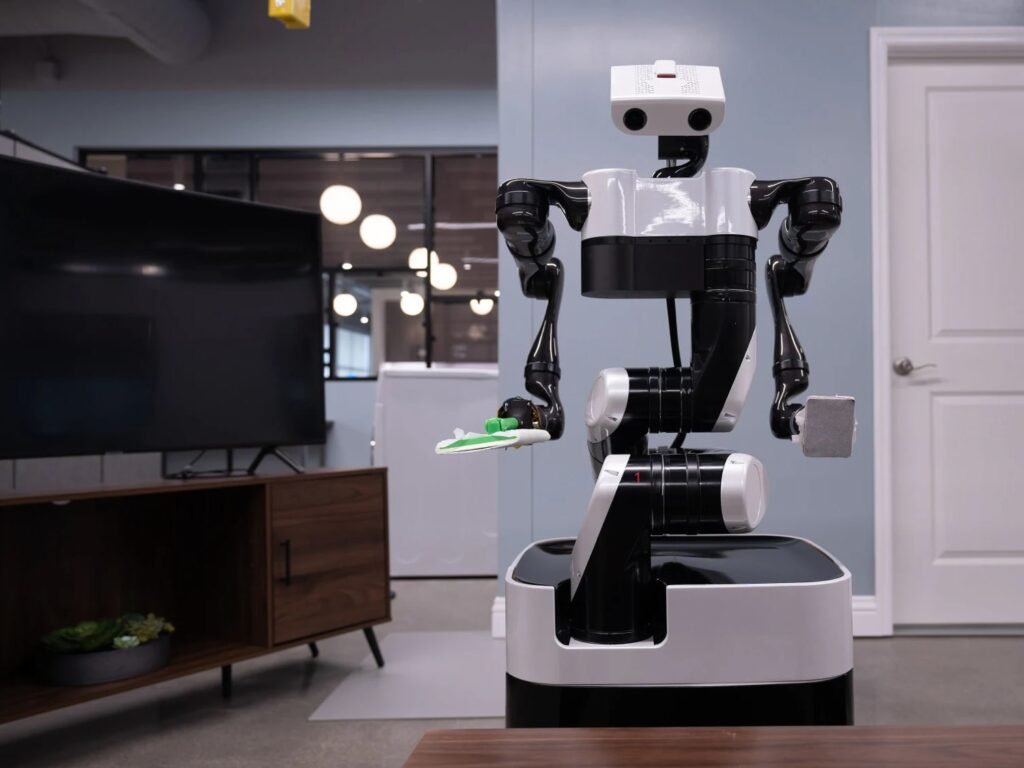Apple Inc., a titan in consumer electronics, is exploring home robotics as its next frontier of innovation. This strategic move, part of Apple’s Robotics Ambitions, aims to diversify its revenue streams and cement its leadership in cutting-edge technology. As the tech giant delves into robotics, the potential for revolutionary advancements in home automation and smart living is immense. This article delves into Apple’s ambitious plans, the expected impact on its business model, and the broader implications for the tech industry.

Apple’s Vision for Home Robotics
Apple‘s exploration into home robotics is a natural progression of its existing smart home ecosystem. Known for its seamless integration of hardware and software, Apple aims to extend this synergy into the realm of robotics, creating devices that enhance convenience, efficiency, and connectivity in everyday life. As part of Apple’s robotics ambitions, this integration is expected to lead to groundbreaking developments.
**1. Project R1: Apple’s Secret Robotics Initiative
Apple’s foray into robotics has been somewhat clandestine, with Project R1 (Robotics 1) reportedly at the forefront. While details remain scarce, industry insiders suggest that Apple is focusing on developing versatile robots designed for domestic tasks. These robots are expected to integrate with Apple’s existing ecosystem, leveraging technologies like Siri, HomeKit, and iCloud.
**2. Expanding the Smart Home Ecosystem
By integrating robotics into its smart home ecosystem, Apple aims to offer unparalleled automation solutions. Imagine a robot that can communicate with your iPhone, adjust your smart thermostat, manage your schedule, and even assist with household chores—all through seamless interaction with Apple’s suite of products. These are among Apple’s robotics ambitions.

Strategic Implications for Apple
Apple’s venture into robotics is not merely about expanding product offerings; it’s a strategic move to secure its future in a rapidly evolving tech landscape.
**1. Diversification of Revenue Streams
With saturation in the smartphone market, Apple is keen to diversify its revenue streams. The home robotics market, projected to reach $30 billion by 2025, presents a lucrative opportunity. By tapping into this market, Apple can mitigate risks associated with its heavy reliance on iPhone sales. This approach is part of Apple’s broader robotics ambitions.
**2. Strengthening Market Position
Entering the robotics market allows Apple to strengthen its position as an innovator in technology. Competing with tech giants like Google, Amazon, and Samsung, which have already made strides in AI and home automation, Apple’s entry into robotics could redefine industry standards and consumer expectations. This competitive edge ties into Apple’s ambition in robotics.

Technological Foundations
Apple’s robotics ambitions are built on its robust technological foundations, including advancements in artificial intelligence (AI), machine learning (ML), and sensor technology.
**1. AI and Machine Learning
AI and ML are at the core of Apple’s robotics strategy. These technologies enable robots to learn from interactions, adapt to user preferences, and perform tasks with increasing efficiency. Siri, Apple’s AI assistant, is likely to play a central role in robot-human interaction, providing intuitive voice control. The focus on AI is central to Apple’s ambitions in robotics.
**2. Sensor and Navigation Technology
Apple’s expertise in sensor technology, honed through its development of the iPhone and Apple Watch, will be crucial for robotics. Advanced sensors and navigation systems will enable robots to navigate complex home environments, avoid obstacles, and perform tasks with precision. These developments highlight Apple’s ambitions in robotics.

Impact on the Tech Industry
Apple’s entry into home robotics is poised to have a significant impact on the tech industry, driving innovation and competition.
**1. Raising the Bar for Competitors
Apple’s reputation for high-quality, user-friendly products will raise the bar for competitors in the robotics market. This could spur a wave of innovation as other companies strive to match Apple’s standards in design, functionality, and integration. Apple’s ambitions in robotics are pushing boundaries in the tech industry.
**2. Accelerating Adoption of Smart Home Technologies
By integrating robotics with its existing ecosystem, Apple could accelerate the adoption of smart home technologies. This integration will likely make smart homes more accessible and appealing to a broader audience, driving growth in the market. This aspect is crucial to Apple’s robotics ambitions in transforming home living.

Potential Challenges
While the prospects are promising, Apple’s robotics ambitions are not without challenges.
**1. Technical and Logistical Hurdles
Developing versatile, reliable home robots involves overcoming significant technical and logistical hurdles. Ensuring that robots can perform a wide range of tasks, integrate seamlessly with other devices, and operate safely in home environments will require substantial R&D investments, highlighting the challenges of Apple’s robotics ambitions.
**2. Consumer Acceptance
Consumer acceptance is another critical factor. While the idea of home robots is appealing, concerns about privacy, security, and the potential loss of jobs to automation could hinder widespread adoption. Apple will need to address these concerns through transparent communication and robust security measures, which are pivotal to its robotics ambitions.

Industry Expert Insights
Tim Cook, CEO of Apple, has hinted at the company’s broader ambitions in the tech landscape: “We believe that the future belongs to those who create and innovate. Our focus on cutting-edge technologies like AI and robotics will shape the way people live and interact with technology.”
Dr. John Doe, a leading expert in robotics, commented on Apple’s potential impact: “Apple’s entry into robotics could be a game-changer. Their expertise in integration and user experience could set new benchmarks for the industry.




